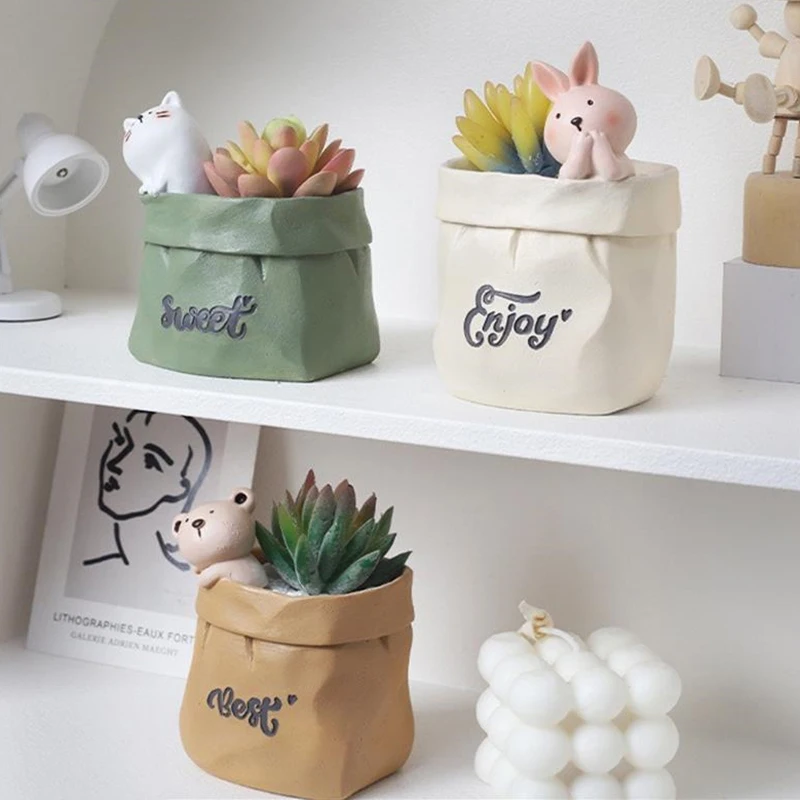Chipmunks, with their adorable stripes and curious nature, can be charming to observe in the wild. However, when these little critters invade your garden, especially your flower pots, their cute demeanor quickly fades as they dig up seeds, devour young plants, and burrow beneath your carefully cultivated containers. Safeguarding your floral displays requires a strategic approach that balances humane deterrence methods with practical gardening practices. This comprehensive guide equips gardeners with a range of tactics to defend their flower pots from chipmunk invasions, preserving the beauty and serenity of their green havens.
Understanding Chipmunk Behavior
Before devising defensive strategies, it’s essential to understand why chipmunks are attracted to your flower pots. Primarily, they seek food (seeds, bulbs, and sometimes young plants), shelter (burrowing opportunities), and water sources. Recognizing these motivations can inform your defense plan.

Physical Barriers: Fortifying Your Defenses
Physical barriers are the first line of defense against chipmunk intruders.
- Mesh Screening: Cover the top of your flower pots with a fine mesh screen, securing it around the rim with clips or ties. This prevents chipmunks from accessing the soil without hindering plant growth.
- Raised Platforms: Elevate pots on stands or pedestals. Chipmunks are less likely to climb when confronted with unstable footing or when the pots are too high for a quick escape route.
- Burrow Blockers: Line the base of pots with hardware cloth, a sturdy wire mesh, to deter burrowing attempts.
Natural Repellents: Using Nature’s Arsenal
Natural repellents leverage the chipmunks’ innate aversions to certain scents and tastes.
- Peppermint Oil: Dilute peppermint oil in water and spray around the perimeter of your flower pots. The strong scent is unpleasant to chipmunks but refreshing for humans.
- Coffee Grounds: Spread used coffee grounds around the base of pots. Chipmunks dislike the smell, and the grounds also enrich the soil as they decompose.
- Hot Pepper Spray: Create a homemade spray by blending hot peppers with water and straining the mixture. Apply this to plants and soil to deter curious nibblers.
Habitat Modification: Making Your Garden Less Inviting
Modify your garden’s environment to reduce chipmunk appeal.
- Remove Food Sources: Keep bird feeders away from flower beds and promptly clean up spilled seeds. Store pet food indoors and secure compost bins tightly.
- Trim Vegetation: Maintain a tidy garden by trimming low-hanging branches and dense shrubs that provide cover for chipmunks.
- Water Management: Ensure good drainage around pots to eliminate standing water, which can attract chipmunks seeking hydration.
Companion Planting: Nature’s Allies in Your Pots
Companion planting involves strategically placing certain plants alongside your flowers to deter pests.
- Strong-Scented Herbs: Plant herbs like rosemary, lavender, and thyme in your pots. These fragrant plants mask the scent of desirable flowers and repel chipmunks with their intense aroma.
- Alliums: Members of the onion family, such as chives and garlic, emit a scent that chipmunks find unappealing. Integrate them into your container garden for dual benefits.
Humane Trapping and Relocation
For persistent chipmunk problems, trapping and relocation can be considered as a last resort.
- Live Traps: Use live traps baited with peanut butter, seeds, or fruits. Check traps frequently and release captured chipmunks at least five miles away from your property to prevent their return.
- Ethical Considerations: Ensure you’re complying with local wildlife regulations and handling animals humanely.
Sonic and Visual Deterrents: High-Tech Solutions
Modern technology offers innovative ways to ward off unwanted visitors.
- Ultrasonic Devices: These devices emit high-frequency sounds that are uncomfortable for chipmunks but inaudible to humans. Place them near flower pots for continuous protection.
- Reflective Objects: Hang CDs, mirrors, or reflective tape around your garden. The flashing lights and movement scare away chipmunks without harming them.
Consistency and Patience
Remember, deterring chipmunks is a continuous effort. Be consistent in applying your chosen methods and patient, as it may take time for them to learn to avoid your garden.
Monitoring and Adaptation
Regular monitoring allows you to identify areas of vulnerability and adjust your strategy accordingly. If one method proves less effective, don’t hesitate to try another approach.
Community Efforts: Working Together
Collaborate with neighbors to create a larger, unified defense against chipmunks. Shared efforts in controlling food sources and habitats can lead to a broader reduction in chipmunk activity.

Natural Predators and Balance
Encourage natural predators like hawks, owls, and snakes in your area by installing nesting boxes or maintaining habitats that support these species. A balanced ecosystem can help regulate chipmunk populations.
The Bigger Picture: Ecological Awareness
While protecting your flower pots is important, it’s equally crucial to recognize the role chipmunks play in the ecosystem. They aerate soil, disperse seeds, and provide food for predators. Strive for coexistence where possible, mitigating damage without causing unnecessary harm.
Creative Landscaping: Designing a Chipmunk-Resistant Garden
In addition to the preventive measures discussed, strategic landscaping can further discourage chipmunks from targeting your flower pots.
- Rock Gardens: Incorporate rock gardens into your landscape design. Chipmunks prefer loose soil for digging and may avoid areas with heavy rock features.
- Raised Beds: Construct raised garden beds for your flowering plants, ensuring they have a solid base that chipmunks cannot burrow under. The added height also makes access more difficult for these ground-dwellers.
- Pathways and Borders: Surround your flower pots with gravel or stone pathways. The noise created by their movement on these surfaces can deter chipmunks, and the lack of cover makes the area less appealing.
Smart Plant Selection: Choosing Chipmunk-Resistant Flowers
Selecting plants that are naturally less attractive to chipmunks can minimize damage to your garden.
- Herbaceous Perennials: Many flowering perennials, such as coneflowers, black-eyed Susans, and salvia, have tough, fibrous root systems that are less palatable to chipmunks.
- Spiky and Aromatic Plants: Flowers with spiky foliage or strong scents, like lavender, yarrow, and thorny roses, are typically bypassed by chipmunks due to their unpleasant texture or overwhelming fragrance.
- Avoid Bulbs and Seed Producers: Chipmunks love bulbs and seeds, so limit the use of tulips, crocuses, and other bulbous plants. Instead, opt for plants that propagate through division or cuttings.
Seasonal Strategies: Adapting to Chipmunk Activity Patterns
Chipmunk activity fluctuates throughout the year, peaking during spring and fall when they are most actively foraging and preparing for winter.
- Spring Preparation: In early spring, apply repellents and install barriers before chipmunks become active. Focus on protecting newly planted bulbs and seedlings.
- Fall Cleanup: Promptly remove fallen fruits, nuts, and seeds, which are prime food sources for chipmunks preparing for winter. Clear garden debris that could serve as shelter.
- Winter Storage: If you store flower pots or gardening supplies outside during winter, ensure they are securely covered to prevent chipmunks from nesting.
Engaging with Nature: Observing and Learning
Observing chipmunk behavior can be insightful, helping you tailor your defenses more precisely.
- Understanding Patterns: Note the times of day when chipmunks are most active in your garden. Adjusting watering schedules or adding deterrents during peak activity periods can be more effective.
- Monitoring Entry Points: Watch for how chipmunks enter your garden space. Closing off these access points with fencing or netting can significantly reduce their presence.
Education and Community Outreach
Spread awareness among your community about the importance of humane chipmunk management, and share your successful strategies.
- Neighborhood Workshops: Organize workshops or share information online about chipmunk-proofing techniques, fostering a collective effort to manage these pests responsibly.
- Cooperative Efforts: Coordinate with local wildlife organizations to promote eco-friendly solutions and address any larger-scale chipmunk population issues.
Enjoying the Process: Gardening with Wildlife in Mind
Embrace the challenge of coexisting with wildlife as part of the joys of gardening. It fosters a deeper connection with nature and encourages creative problem-solving.
- Balancing Beauty and Function: Design your garden to be both visually pleasing and functional in deterring unwanted visitors. This holistic approach enriches your gardening experience.
- Documenting Progress: Keep a journal or photo record of your garden’s evolution, noting successes and areas for improvement. Celebrate small victories along the way.

Conclusion: A Comprehensive Defense for Your Flower Pots
Securing your flower pots from chipmunk invasions requires a multifaceted approach, combining physical barriers, natural repellents, habitat modification, and modern deterrents. By understanding chipmunk behavior and employing a combination of these strategies, you can effectively guard your garden without compromising the welfare of these small mammals or the harmony of the natural world around you. Remember, persistence, adaptability, and respect for nature are key to achieving a beautiful, chipmunk-resistant garden.
